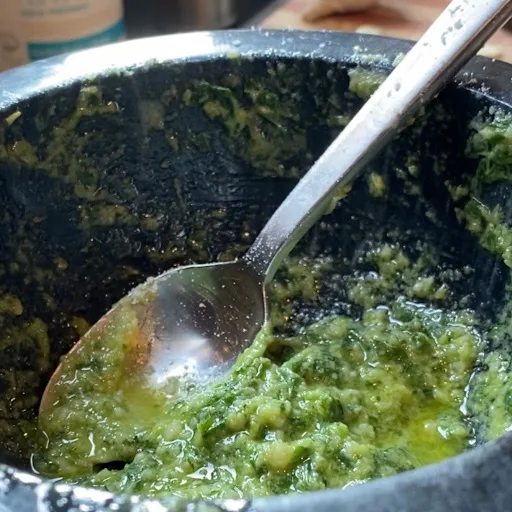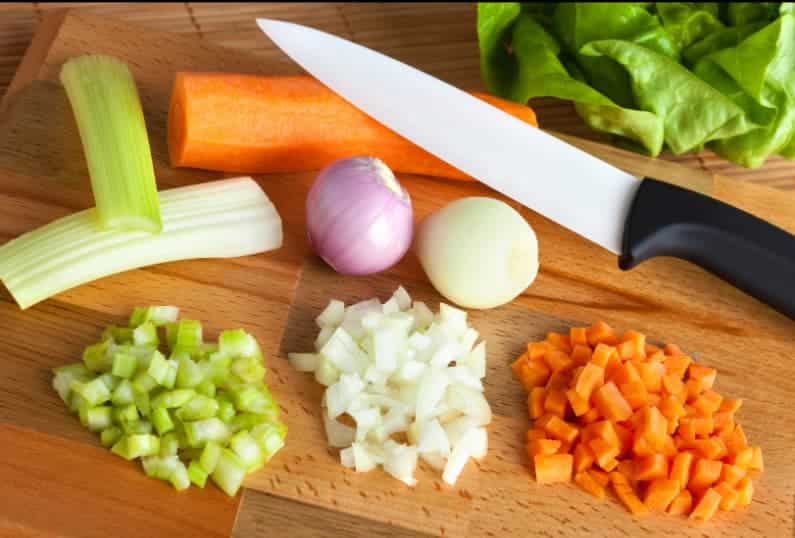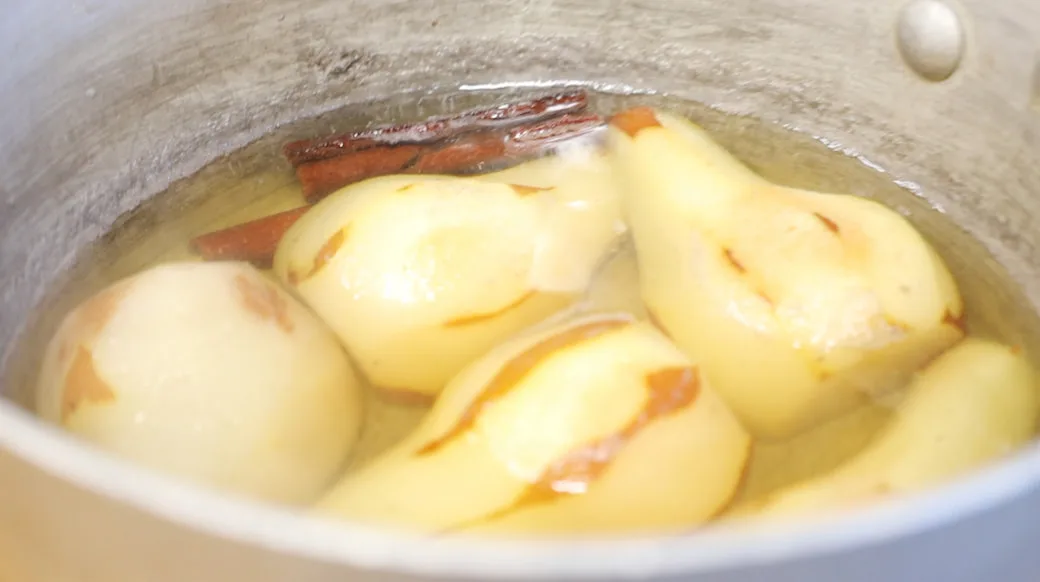Don’t get me wrong, I love and appreciate a big ol’ bowl of pasta. But in an effort to maintain a healthier lifestyle, I often use pasta substitutes for recipes that typically call for pasta.
As a food enthusiast who loves exploring healthy options, I’m constantly on the lookout for substitutions. One of my go-tos for a pasta alternative is spaghetti squash! I was so impressed the first time I made one that now this veggie has become a staple in my kitchen as a delicious alternative to traditional pasta. Not only does it satisfy those pasta cravings with its spaghetti-like strands, but it also packs a powerful nutritional punch.
The Versatility of Spaghetti Squash
Spaghetti squash is incredibly versatile! I love tossing it with my favorite marinara sauce and adding meatballs and parmesan cheese for a classic Italian-inspired meal. But the possibilities don’t stop there. Some of my favorite sauces include Arabbiata sauce, a spicy Thai peanut sauce, and even a lemon-butter garlic sauce. I always grab one at the grocery store, knowing that I’ll find a new creative way to cook with it.
Spaghetti squash can be used for any meal. I’ve made spaghetti squash boats as a main dish, creamy squash with garlic is a simple side dish, and veggie scramble for breakfast.

The Health Benefits of Spaghetti Squash
Compared to pasta, this golden yellow veggie is lower in carbs and calories, making it a guilt-free indulgence. I find it to be a fantastic choice for managing weight or following a low-carb diet. Plus, it’s rich in fiber and a great source of vitamins and antioxidants, keeping me feeling energized and satisfied.
What to Know Before Cooking Spaghetti Squash
Choose Your Cooking Method:
There are several different methods for cooking spaghetti squash. You can roast or microwave spaghetti squash, cook it in an instant pot or pressure cooker, or even use a slow cooker. My favorite way to cook it is by roasting it on a baking sheet. For me, this yields the best results.
Prepping Your Spaghetti Squash for Roasting:
Wash and dry the spaghetti. Place the whole spaghetti squash on a cutting board. Using a sharp knife, carefully cut the squash lengthwise from stem to end. Use an ice cream scoop or spoon to scoop out the core and seeds from inside of the squash. Place squash cut side up on a baking sheet and drizzle each spaghetti squash half with a little olive oil.

Pro Tips:
- Piercing for steam release: Use a fork to poke several holes in the squash before roasting. This allows steam to escape and prevents the squash from bursting.
- Adding a little water to the baking sheet: This can be helpful for preventing the squash from drying out, especially if you find your oven tends to run hot.
- Flipping for even browning: For perfectly browned and evenly cooked squash, flip the halves (or rings/wedges) over halfway through the baking time.
- Testing for doneness: Don’t rely solely on cooking time as the size of the squash will vary. The best way to test for doneness by inserting a fork into the flesh. It should pierce easily and the long strands should separate readily.
- Avoiding soggy strands: If your squash seems watery after cooking, try placing the cut halves face-down on a paper towel-lined baking sheet for 10-15 minutes before roasting. This helps absorb excess moisture.
- Broiling for a touch of crisp: For a slightly crispier texture, briefly broil the already cooked squash halves for a few minutes. However, keep a close eye on it to prevent burning.
- Prep your leftovers: Leftover roasted spaghetti squash can be stored in an airtight container in the refrigerator for up to 3-4 days or frozen for longer storage.

Reheating Leftover Spaghetti Squash:
Now what? Let’s talk about what to do with your cooked spaghetti squash. Reheating leftover spaghetti squash is relatively quick and easy.
1. Oven Reheating (The Best Method):
- Pros: This method offers the best way to retain the original texture and flavor of the roasted squash. The heat allows the strands to dry slightly, preventing them from becoming mushy.
- Cons: It takes the longest time compared to other methods (around 10-15 minutes).
- Instructions: Preheat your oven to 375°F (190°C). Place the desired amount of leftover squash on a baking sheet, spreading it out in a single layer. You can add a drizzle of olive oil or a little water to prevent drying, but be mindful of adding too much. Reheat for 10-15 minutes, or until warmed through.
2. Microwave Reheating (The Convenient Way):
- Pros: This is the fastest way to reheat leftover spaghetti squash, taking only a few minutes.
- Cons: This method can affect the texture of the squash, making it slightly softer or even a bit mushy compared to oven reheating.
- Instructions: Place the desired amount of leftover squash in a microwave-safe bowl. Add a tablespoon of water or broth to prevent dryness. Cover the bowl with a lid or loosely with a paper towel. Microwave on high power for 1-2 minutes, stirring halfway through. Check for doneness and continue heating in 30-second increments if needed.
3. Stovetop Reheating:
- Pros: This method is a good option if you plan to use the leftover squash in a dish that involves heat, like a stir-fry or a creamy sauce.
- Cons: It requires more attention compared to other methods to prevent burning or drying.
- Instructions: Heat a pan over medium heat. Add a drizzle of olive oil or melted butter. Add the leftover squash and stir-fry for a couple of minutes until heated through. Be mindful of overcooking, as this can make the squash mushy.
So, there you have it! Spaghetti squash is a delicious, versatile, and healthy alternative to traditional pasta. From main dishes to side dishes and even breakfasts, the possibilities are endless. Ditch the box of pasta and embrace the world of spaghetti squash. Your taste buds and your body will thank you!
P.S. Don’t forget to share your favorite ways to cook with spaghetti squash in the comments below! I’m always looking for new and creative recipe inspiration.

The Best Roasted Spaghetti Squash
- Author: Christina Orso
Ingredients
- 1 whole spaghetti squash
- Olive oil
- Salt and black pepper
Instructions
- Preheat your oven to 400°F (200°C).
- Wash and dry the spaghetti squash: Give the squash a good scrub under running water and pat it dry with a paper towel. Alternatively, you can wipe it down with a damp paper towel.
- Cut the squash in half lengthwise: Use a sharp knife to cut the squash stem-to-end, creating two halves carefully.
- Seed the squash: Use a spoon to scoop out the fibrous core and seeds from each half.
- (Optional) Season: Drizzle each half with a little olive oil (about 1 tablespoon per half) and sprinkle with salt and pepper, if desired.
- Place the squash halves cut-side down on a baking sheet. This will allow the steam to release and help the flesh cook evenly.
- Bake for 40-45 minutes, Or until the flesh is easily pierced with a fork and the strands separate readily. Check for doneness around the 35-minute mark, and adjust the time as needed depending on the size of your squash.
- Let cool slightly: Once cooked, remove the squash from the oven and let it cool for about 5-10 minutes before handling.
- Scrape the strands: Use a fork to scrape the softened flesh, creating spaghetti-like strands. You can also use a spoon or a tool specifically designed for shredding spaghetti squash.










